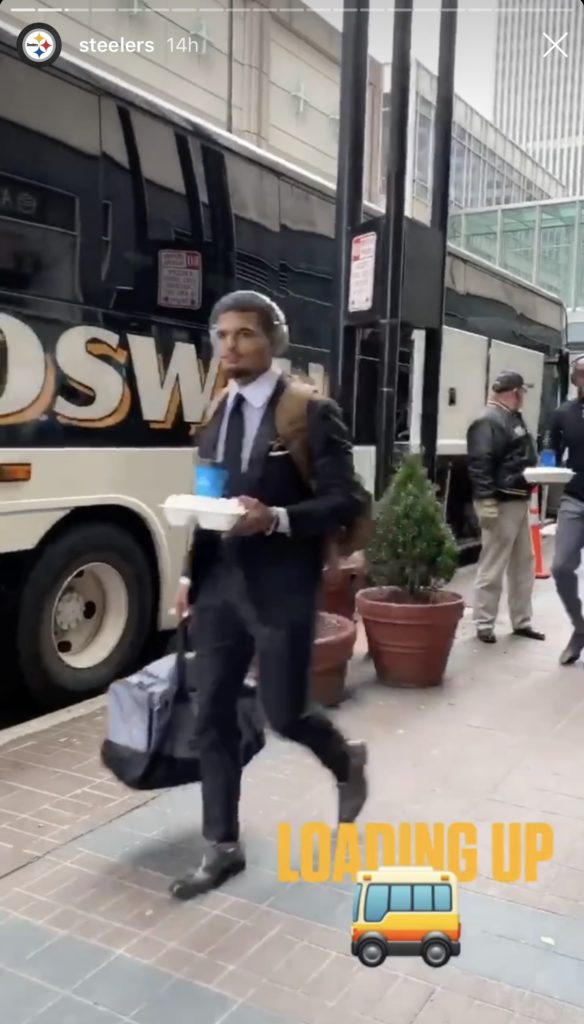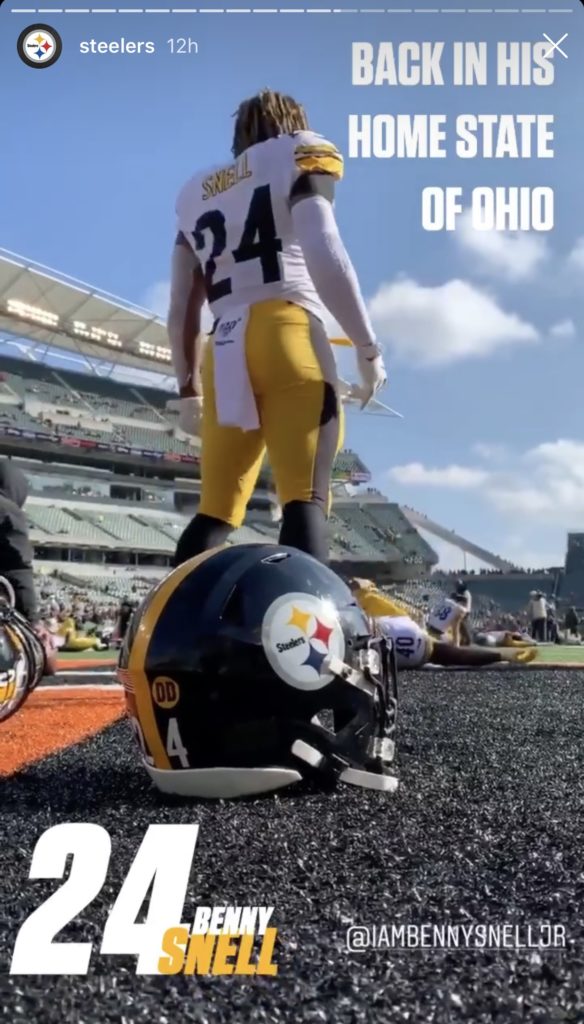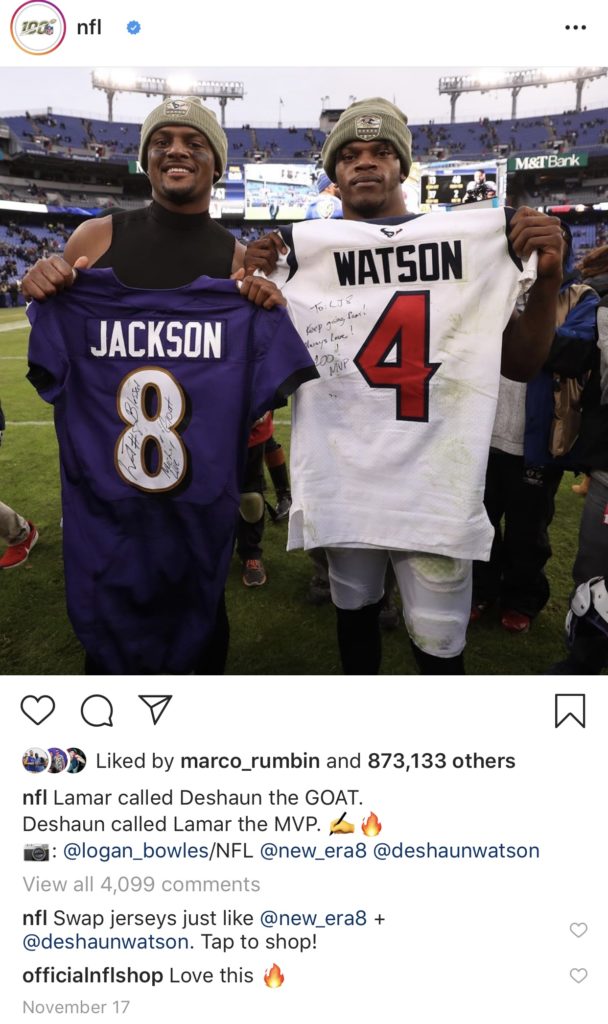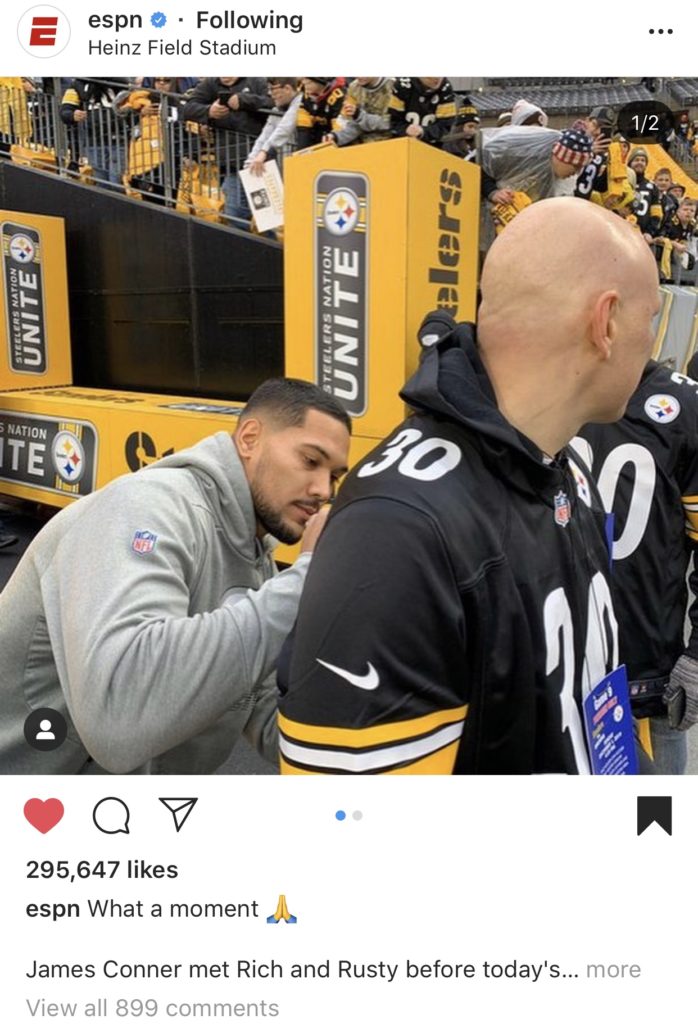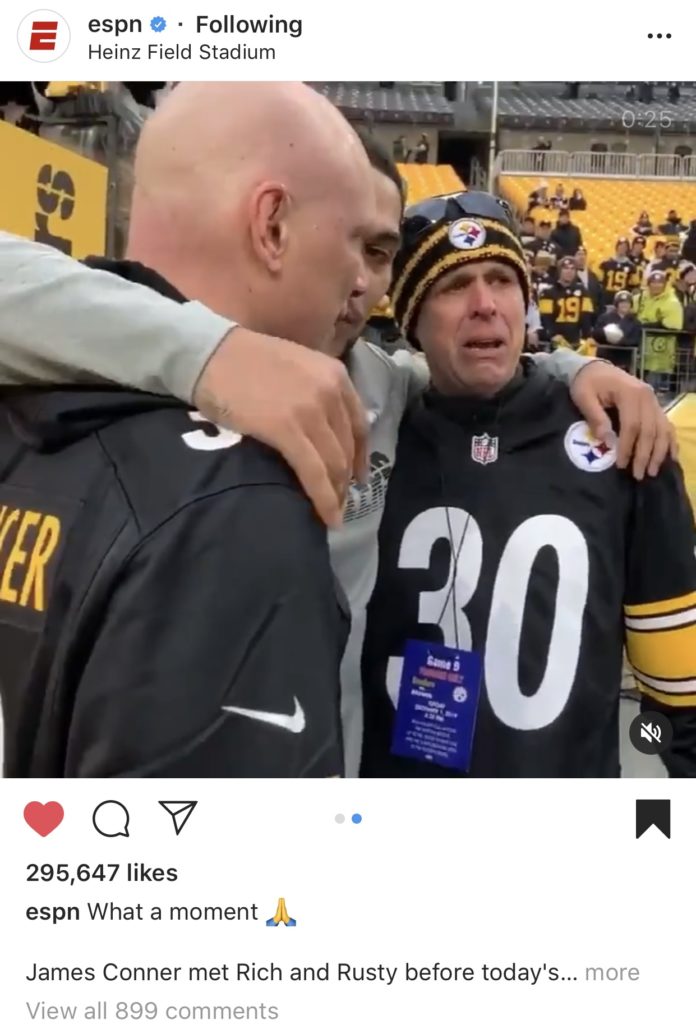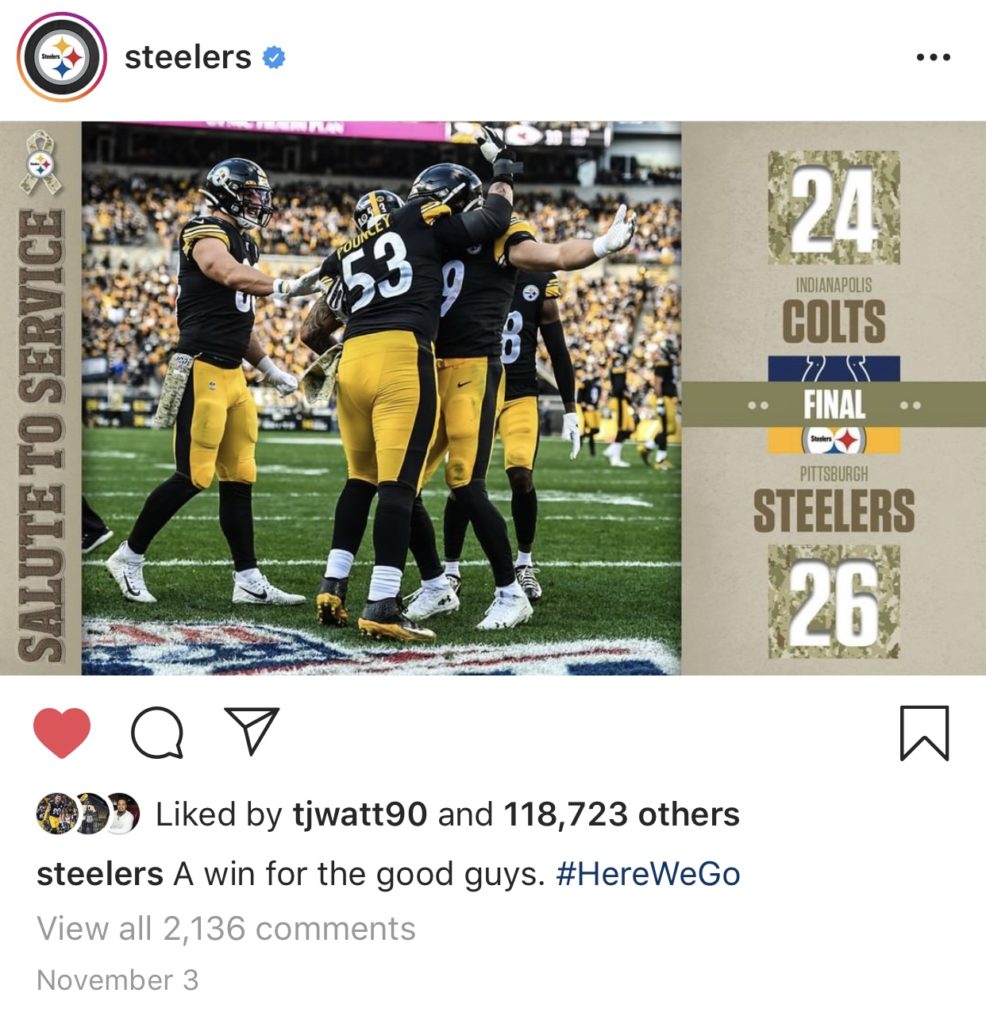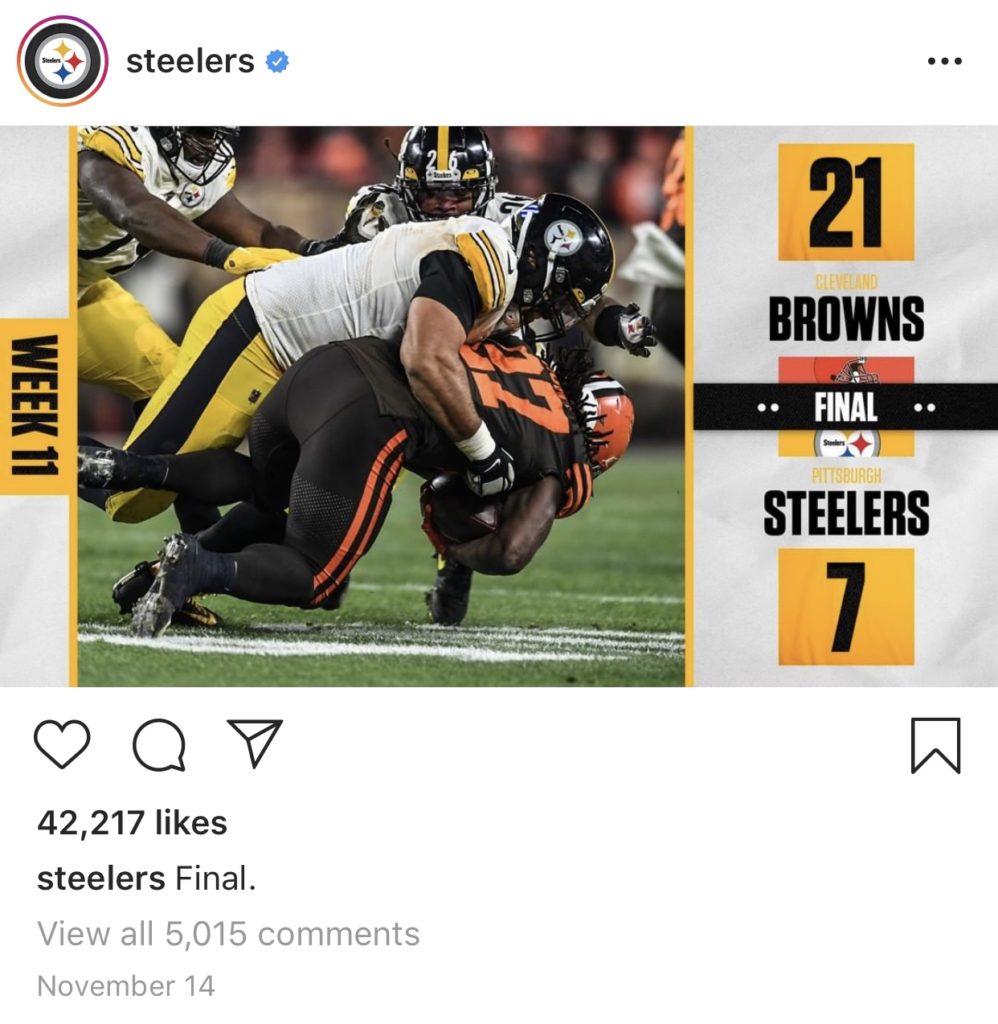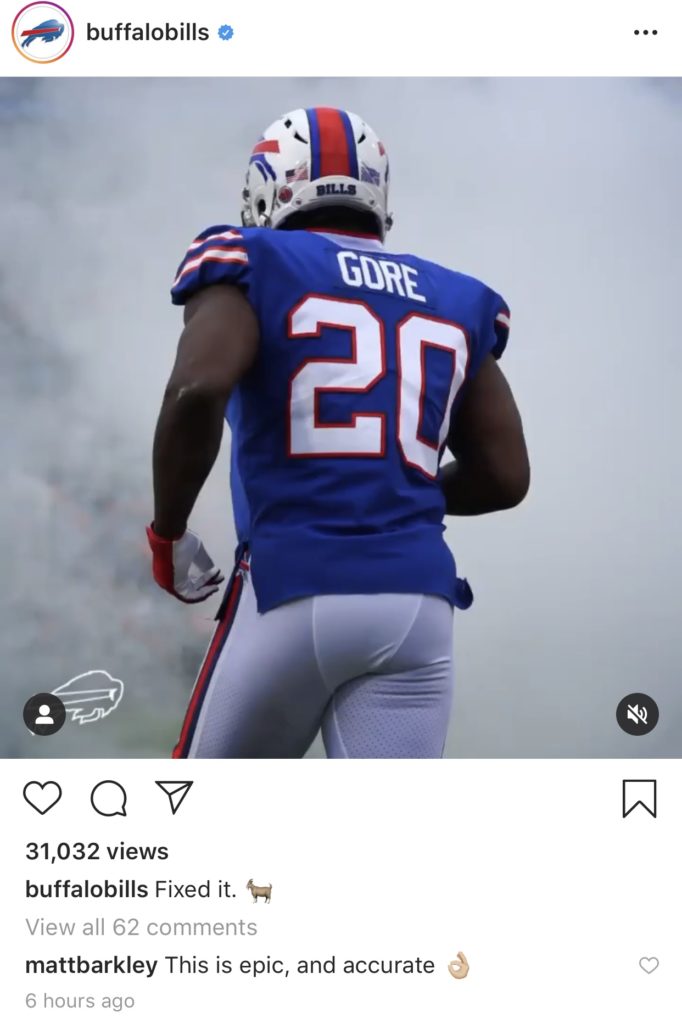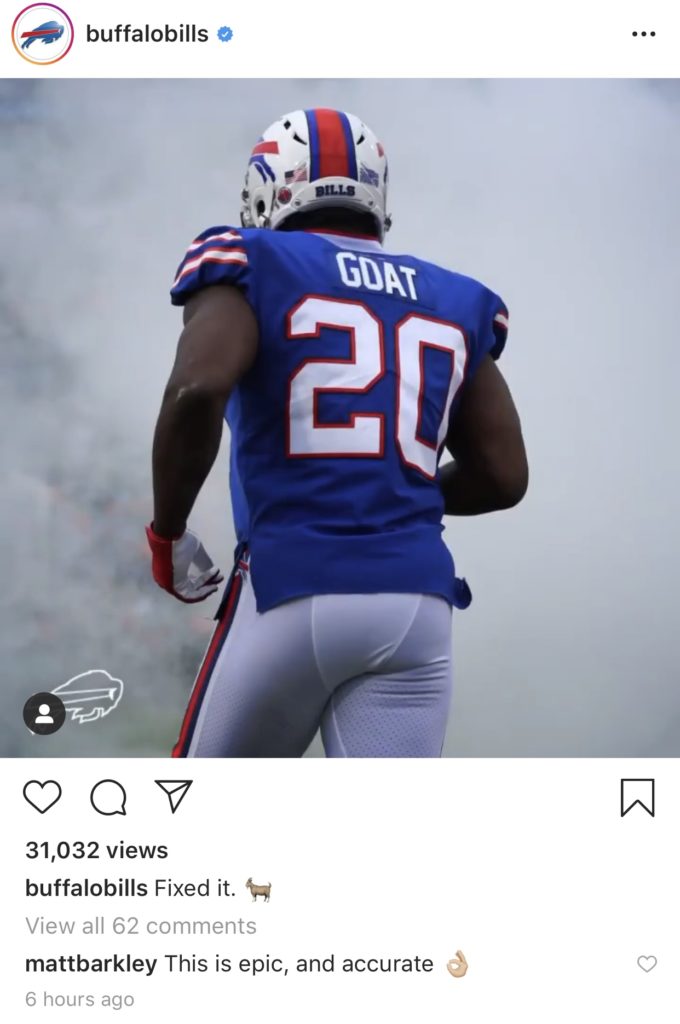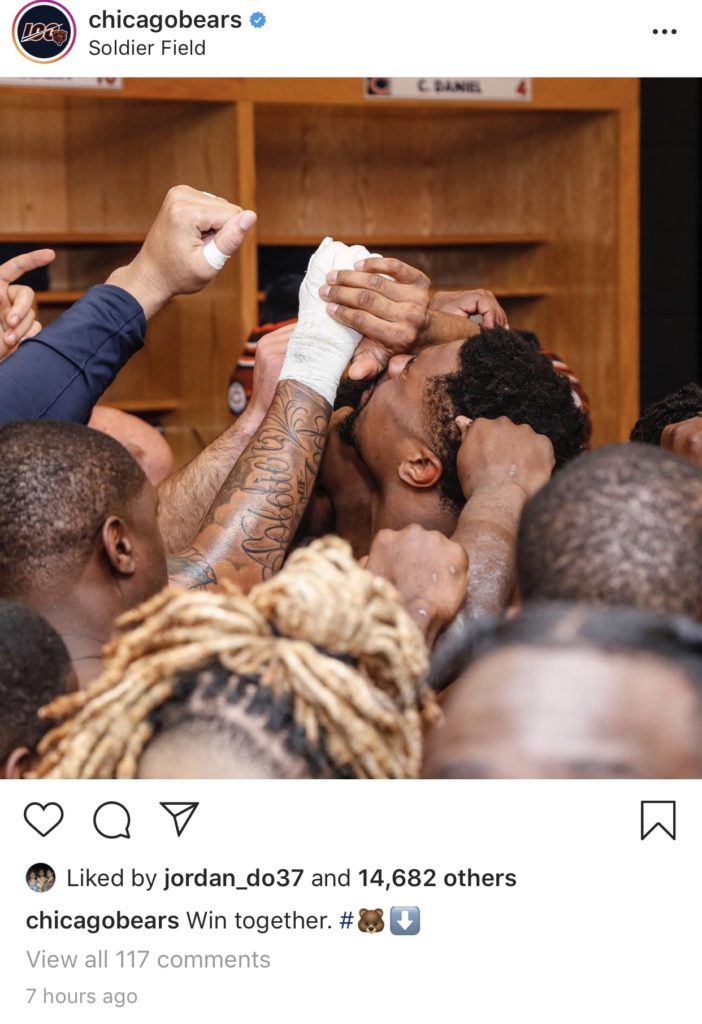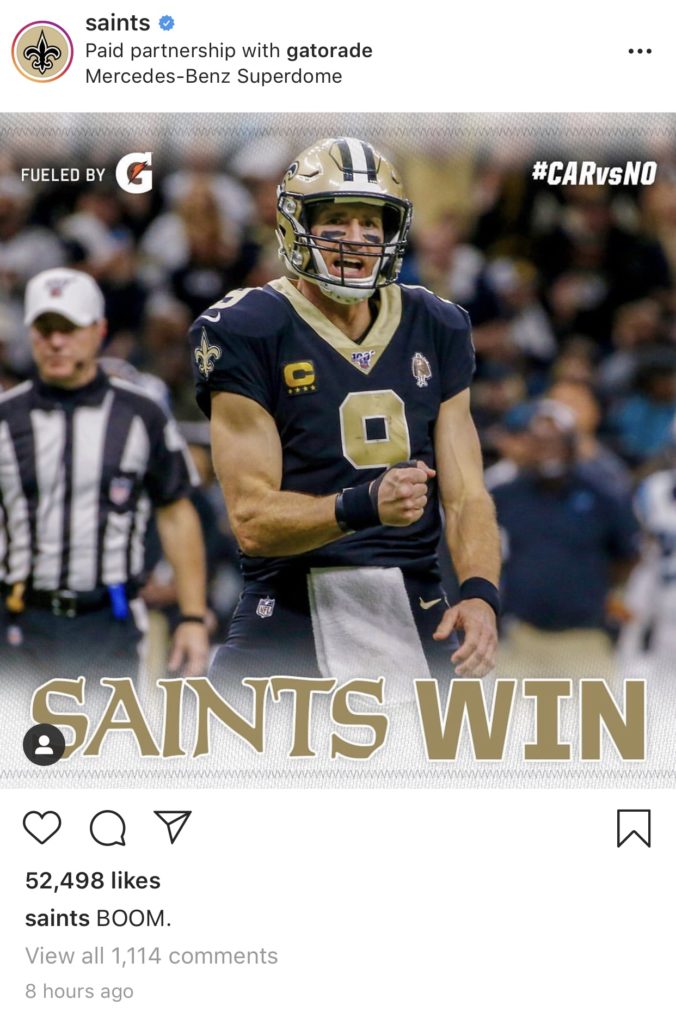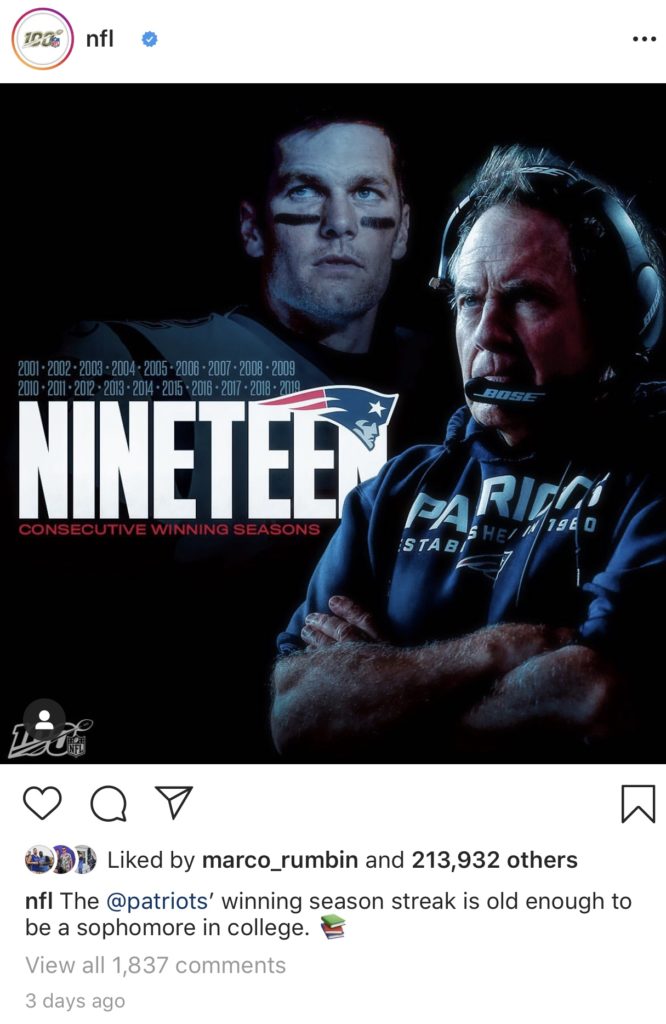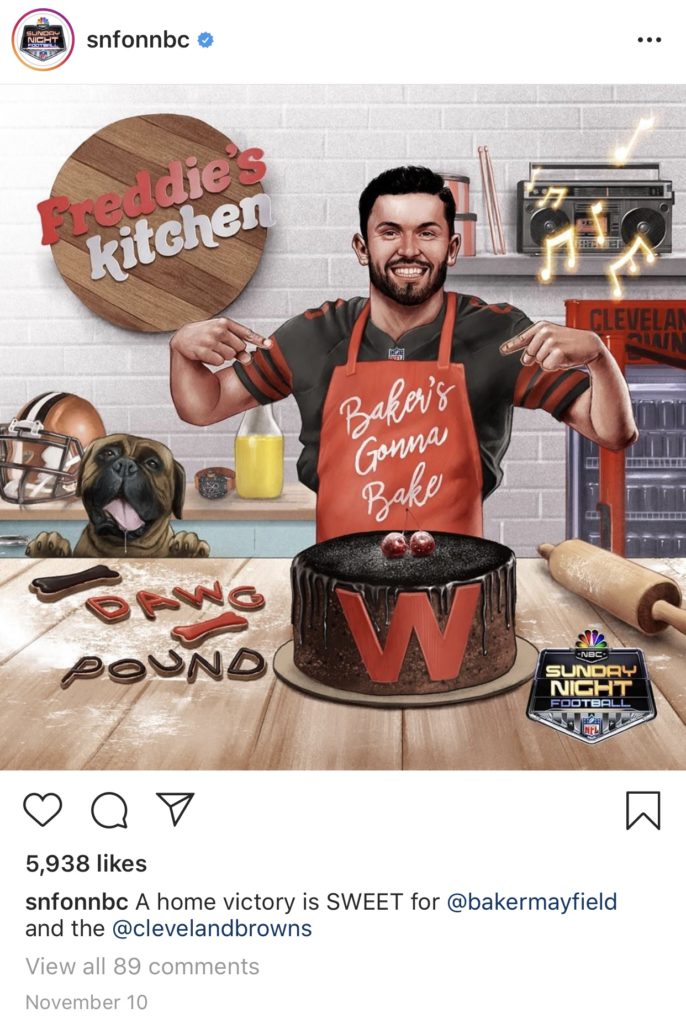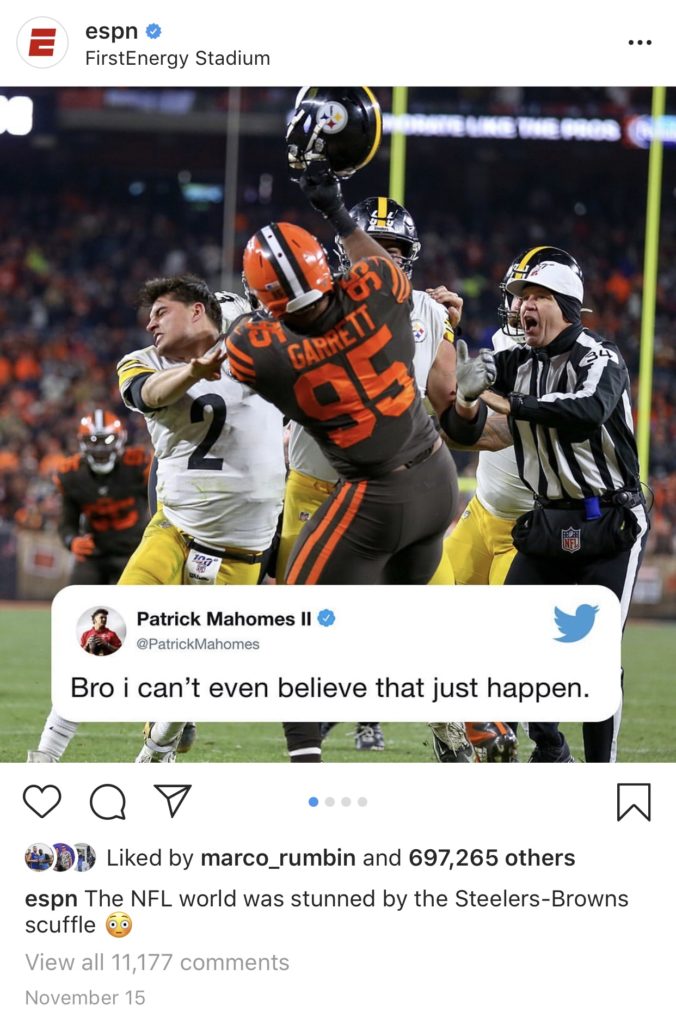While most people on social media platforms such as Instagram and Twitter follow their friends, family, and favorite celebrities, it is also likely they follow their favorite sport teams and athlete’s pages as well. But why follow your favorite team when you can just watch them on TV in the big game or in highlights on one of the dozens of sports channels? What draws people to want to follow and see the content that goes on their favorite team’s page and how do these pages create fan interactions nationwide? Just like fans have certain expectations of their team on the field, the same goes for what they expect to see online on their favorite teams pages which uses visual storytelling and a number of other techniques to keep fans coming back. As most know social media has only continued to grow its influence over the years and expand to new areas of user engagement and interaction. But what has also happened over the years is that there has been a shift from social media to visual social media (Moritz). And there aren’t many better opportunities visually than live game narratives and exciting action to capture. Visually storytelling has been used a number of ways in sports social media through PR and marketing as teams have shifted towards showing things visually instead of telling fans what they may already know.
Visuals are the key for any effective post in today’s world of social media which has shied away from having too much text on screen. People remember 80% of what they see, but only 20% of what they read (Perera). But just having an image present and no text does not mean it will be effective in the goal of storytelling and marketing the teams brand. There are a number of techniques and principles that can be used to in visual storytelling, but teams must first know what they want to accomplish with their posts.
The goal for any sports team page is to increase their fan base but also to keep current fans content as well. This means providing fans with scores and news updates regarding their team’s status. But what separates a good social media page from a great one is if the visuals and content used help to create an experience for fans. The most effective and popular sports pages are those that engage directly with fans by “transporting” them from being fans on the couch to instead right on the field or locker room next to their favorite players. “Through social media, fans not only connect with sport teams and leagues, and athletes themselves but this direct connection has allowed fans to now be a part of the sport organization’s story” (Brian Clapp).
Pictured above are the Pittsburgh Steelers arriving for their road game in Cincinnati. These images help to give the viewer a behind the scenes look at their favorite players but also reminds them of the upcoming game and to revisit the page later for on the field updates. Constant engagement is what allows these teams to build hype by giving fans an exclusive look if you will by seeing the stadium as locker rooms as a player would. This inside look allows for the narrative of the game to start even before kickoff and draws fans back for the conclusion of it either to celebrate a victory or discuss why they lost.
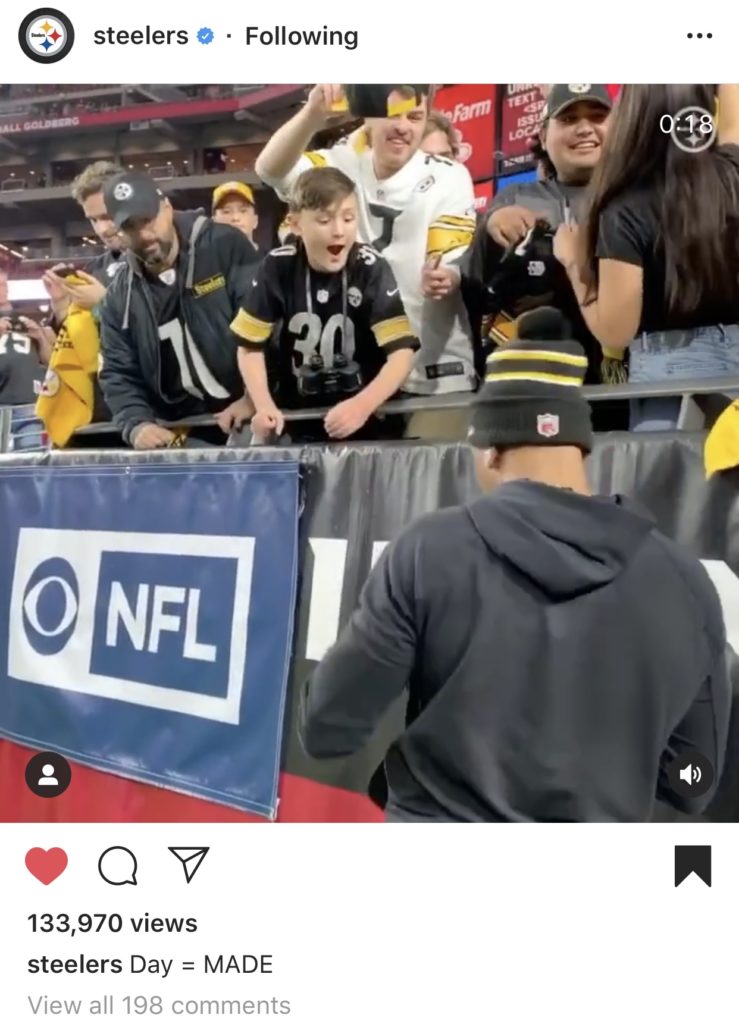
But while it is important to give fans a player’s perspective, it is almost important to show other fans in the visuals so that viewers can picture themselves and connect with these experiences. The picture above of a fan getting an autograph not only conveys the morals of players on the team but also the excitement of the fan being given the opportunity to meet their favorite player by attending the game. This narrative hits on the positivity of fan engagement and also revenue to show people the positives of attending live games and showing up before kickoff. And as Michael Patterson writes in his article Social Media in Sports: 5 Strategies from the Pros, “Professional sports franchises are brands.” And with that comes the expectation of using social media to drive revenue of online social media into tickets and merchandising sales. All of which can be easily accessed by a link on the team’s social media page. And the same goes for fans who post pictures of themselves at games which are then shared live on the video board for all to see and try for themselves. Integrating customer content can help to communicate authenticity (Zen).
More often than not too fans find players taking over a team’s social media account for a day to give their story and perspective one being a professional player. Posting corporate stuff won’t rally a fan base” (Patterson). Which isn’t always the case for what is posted, but seeing a change of pace from the same weekly content can sometimes help to create loyalty from the fans who are being given new opportunities. But to accomplish this, it is important that visual storytelling is done correctly and effectively. Because then it has the chance to increase loyalty and strengthen customer relationships and awareness (Gioglio). To do this one has to know how to show and not always tell the story or message for fans. If someone is told something, like say a movie spoiler, then it is not nearly as effective as say them watching the movie and finding out the major plot twist for themselves. The same can go for visuals.
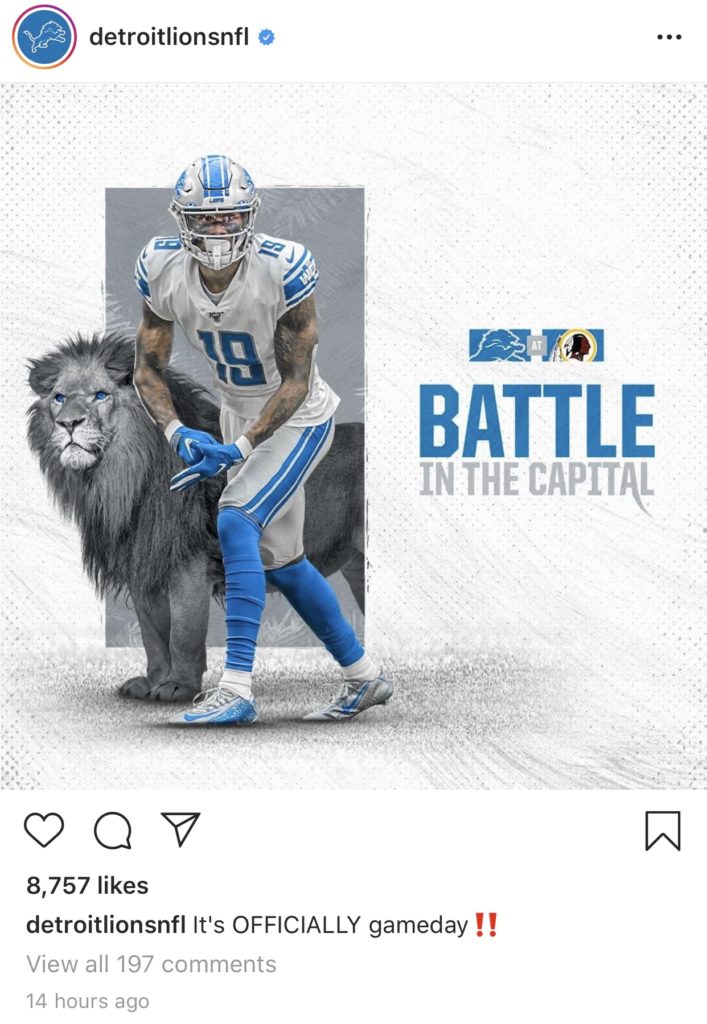
People will respond more effectively and positive towards visuals than text. That is why having a visual as the main component of any social media post is more effective than any amount of text. According to Elisabet Perera, the brain can process any image up to 60,000 times faster than words. So it’s safe to say that including a picture, visuals, or graphics is a must in any post nowadays. But it is also important too to not overload posts and confuse people and detract them from what they are seeing in front of them. Having too much going on at one time either from graphics, numbers, or background action can cause viewers to possibly miss out on vital information of the story or possibly even miss the entire information or story altogether. Just like people wouldn’t write run-on sentences and overload text, the same should go for visuals. If you’re having trouble conveying the right story and message, its best to look at including a caption for the post.
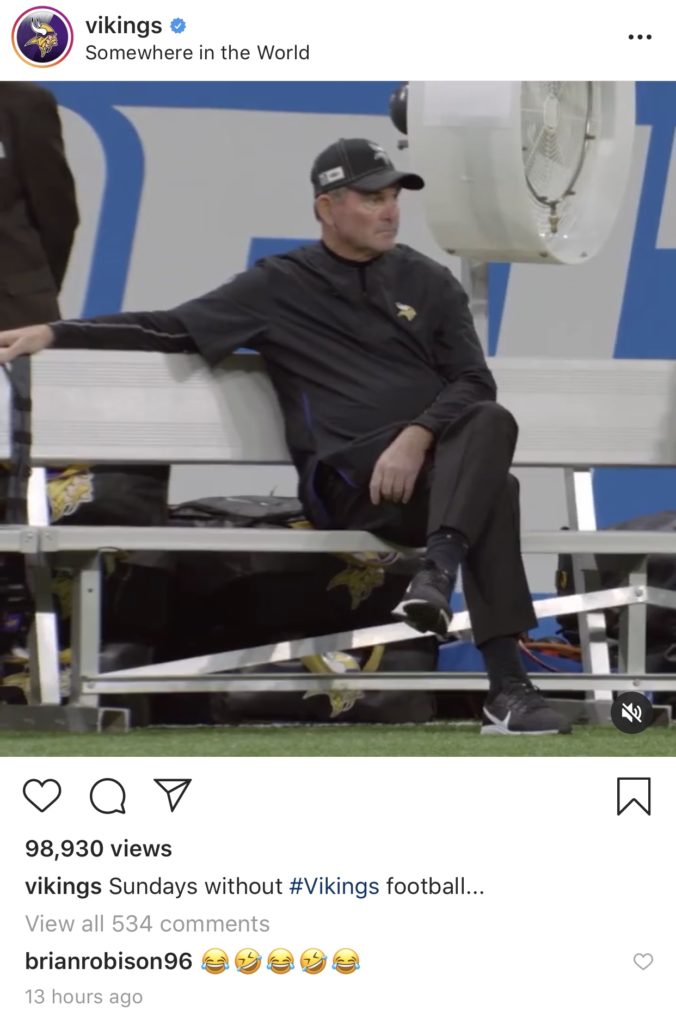
It’s one thing to include a lot of text on the visual and graphic, but social media allows for captions to be used effectively in aiding the visual storytelling. Captions can help to further understand live pictures fans are given. Some sports pages will choose to “recycle” photos taken out of context by inserting different captions to deliver a different visual story. Above is the Minnesota Vikings head coach Mike Zimmer who sits on the team bench. This photo could’ve been take before the game during warmups as he waits for kickoff, but notice the caption underneath. The Vikings choose to put this photo in the context of the team being on a bye week. Suddenly this picture has a new meaning in the minds of the fans who see it in new context.
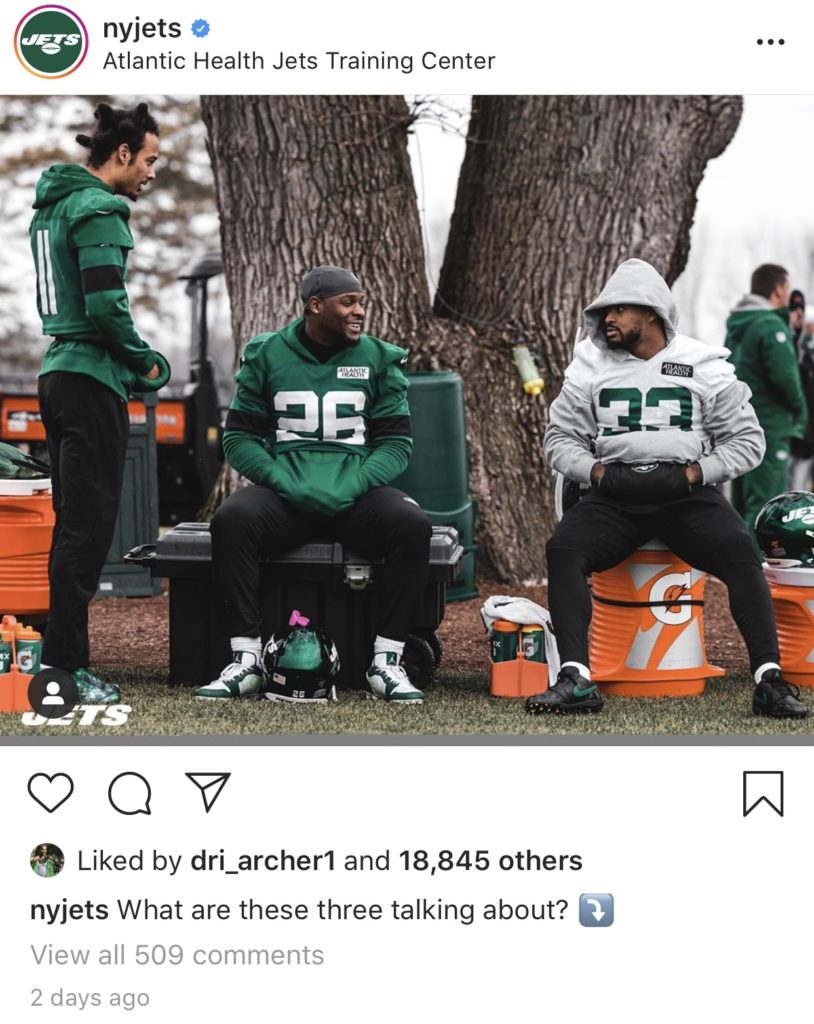
Not everyone can identify where and when every photo was taken, so it’s up to the visual and text to work together in telling the story. Otherwise the viewer will make up their own story which when done intentionally is a very effective strategy. These opportunities present a call to action for fans to engage in the convenient comment sections below the picture. The picture above show teammates on the NY Jets gathered around and talking during one of their practices. Instead of being told what they are talking about, the sports social media team instead asks what fans think they are talking about. Impossible to know exactly what they are discussing, fans instead can call back on the recent game or comments made by the characters for intentional wrong answers of comedic effect sparking conversation from fans and quite possibly player reactions and input as well.
What makes sports a compelling story and narrative opportunity are things like rivalries and success stories. Just like in movies we want to see how the characters react to certain events and people. Above we have quarterbacks on both winning and losing sides, yet both show different signs of respect for each other and the game through their visuals. Brady and Prescott (left) go in for a quick pat on the back and exchange of words. And on the right is Watson and Jackson giving each other their game jerseys with hand written messages and signatures to each other. These pictures would most likely be different if the teams were rivals however or put into context at a later point in time say down the road in the playoffs, but for now they choose to highlight the respect players have for one another in the game of football.
“Your photo will have a better chance of going viral and defining a moment if it’s a professional quality image with a unique point of view” (Twiford). A few weeks ago Steelers running back James Conner made headlines when a moment was captured of him talking to Rich, who is currently battling a rare form of sarcoma. Players are always shown giving back to those in need and giving fans the opportunity to meet them, but what makes this image so powerful is the story behind it. Fans who follow the Steelers or even the NFL itself know that Conner is a survivor of Hodgkin’s lymphoma, which makes this interaction between the two even more powerful. By capturing the viewers’ attention with the signing of the jersey and caption underneath to explain the situation further, a very powerful and moving video of the two interacting is then shown. By having the context of the story and background of the two men it makes their conversation, even though unheard, powerful in having the viewer have an idea of what Conner is saying to Rich.
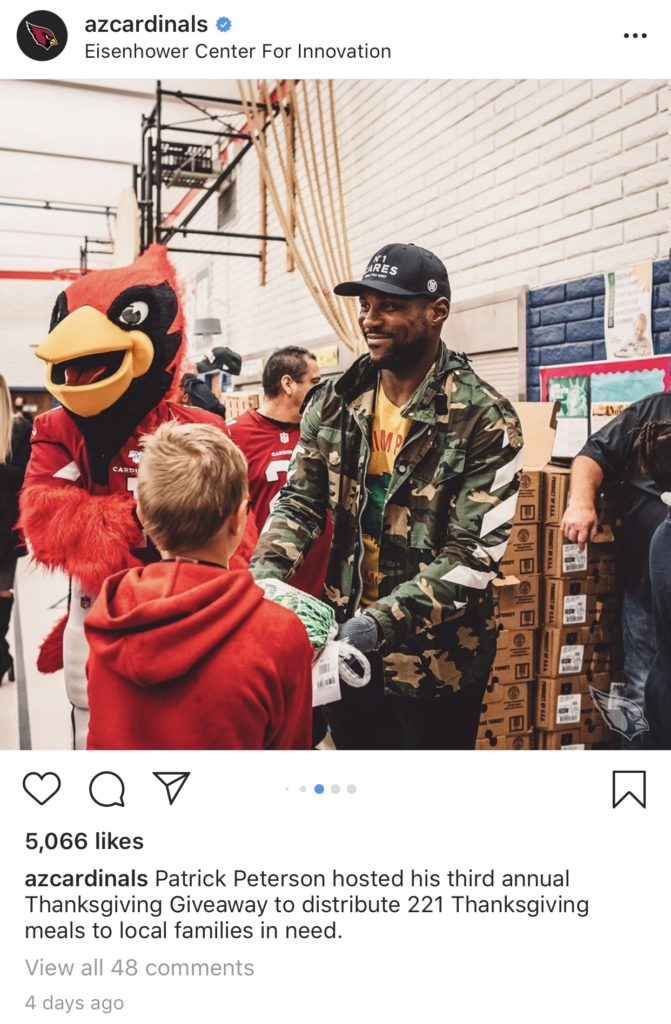
By showing players in personal situations, fans are able to better connect and visualize themselves in the same situations and are more believing in them being realistic. Here the Cardinals are shown at their respective charities which help to highlight player personalities and stories off the field, which can then be recalled upon seeing them back on the field. This kind of content and visuals also helps to create engagement among fans who build a community around their team in addition to the one online. Sharing this type of content creates engagement and can help to influence others to give back. The ability to share content helps designers to know which content is more effective and engaging to viewers, which is why sometimes in terms of social media teams choose less traditional forms of photos and video to instead give fans something to talk about rather than spend time thinking about then forgetting.
By incorporating comedic elements like gifs and memes, teams are better able to market themselves from the rest of the competition and better allow for sharing. The content used too is information fans are most likely aware of or can understand with less text or visuals than usual. It instead combines the knowledge of their team with that which they know from things like pop culture references which allows for them to share with their friends and have them understand what is going on even though they may not be a fan of the team too. Take a look at the picture below. Are people more likely to text the final score of the game to their friends, which they probably already know, or are they more likely to send a Patrick Star related meme?
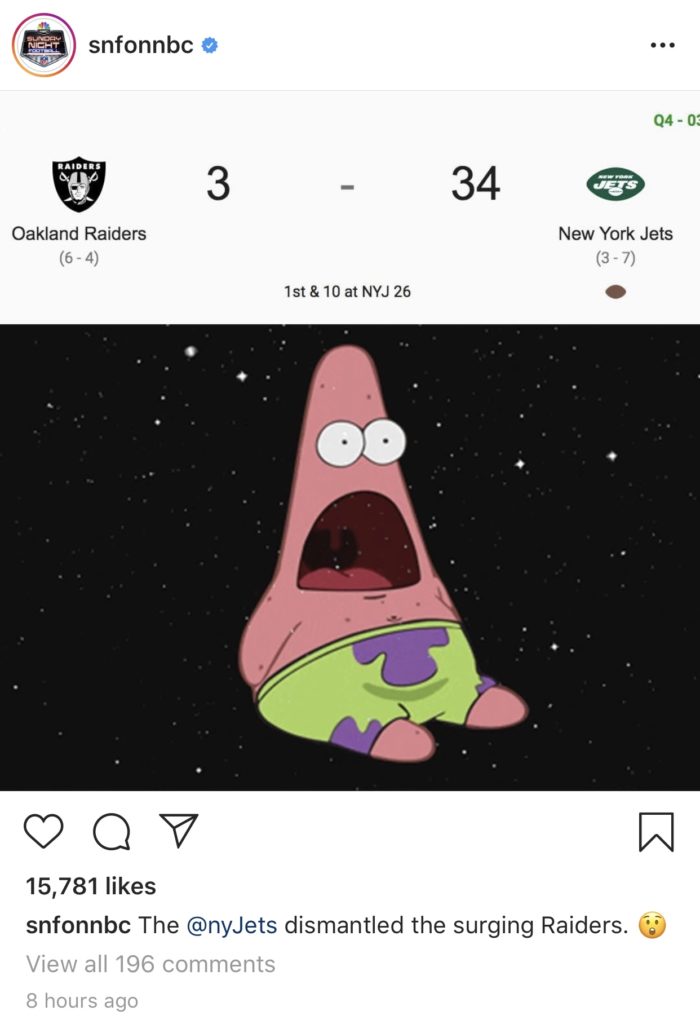
Seth Gitner in his article Multimedia Storytelling for Digital Communicators in a Multiplatform World defines a moment as a single point in time at which any action may be stopped to tell the story in a single frame. It is in these moments that viewers are able to feel emotion and empathy for the subject at hand. Here we have two posts from the Pittsburgh Steelers that each show the score at the end of each game. One thing to note is that one comes after a win and the other after a loss. Is it a coincidence that each post reflects the outcome and feeling of the team and fans after the game? Notice the difference in feeling and picture choices.
The winning picture shows teammates celebrating as well as a caption reflecting the mood of the players, while the picture from the loss has a one word caption and really no good context to show from the game other than a tackle. It is also no coincidence in the number of likes being that much higher for the win for fans being happy while the losing picture has more comments most likely criticizing the performance and outcome of the game.
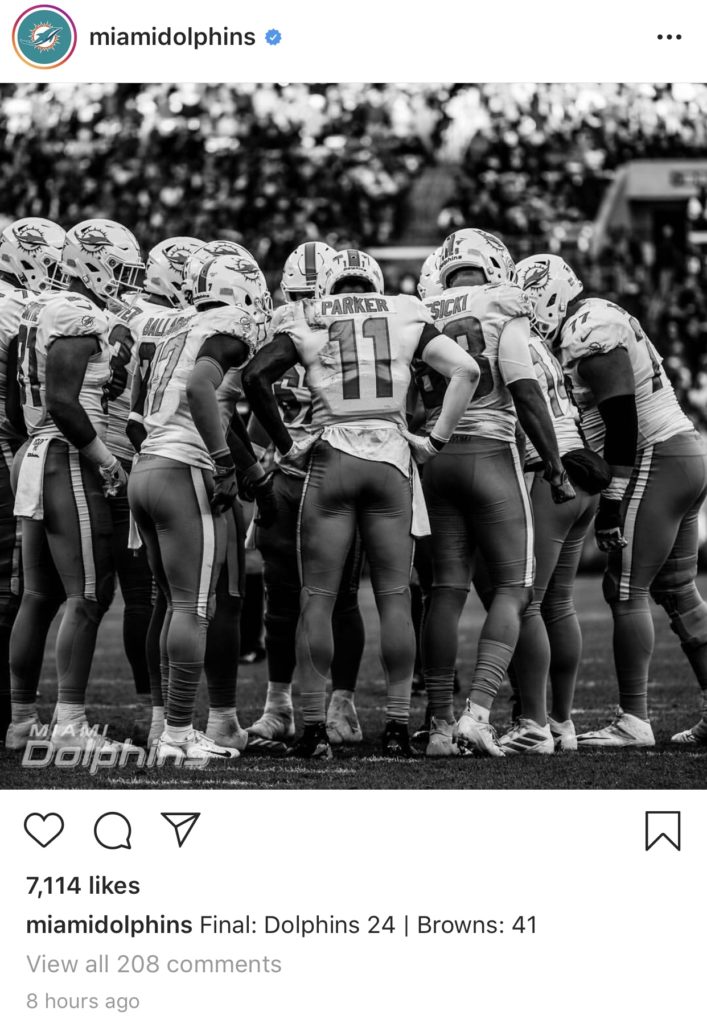
Lighting and contrast can immediately affect how viewers feel when looking at a picture. This black and white photo of the Dolphins not only represents their current loss but also the gloom that has been a cloud over their entire season of mediocrity. Both the team and fans spare each other no need of further explanation of how everyone is feeling this season. This visual storytelling choice relates back to how combining color and sensory impression can help to reflect that of mood and emotion (Lupton). If color is not used correctly, then fans will be confused by the content and emotion being evoked by the team or even that the content being produced is “fake” and corporate with no regard for how to engage fans.
There are a number of different age ranges that social media teams have to cover in sports, but one thing for sure it that both young and old fans benefit from their connections with the stories of their favorite sports franchises in the content given. From breaking down the history of rivalries for older fans to call back on, to new fans learning the history of their team, both can marvel together at the history as young and old players are highlighted by their teams history and success. Milestones and records being broken are not an everyday subject matter, which is why some teams choose to represent this history in a special way. Above pictures taken from a gif after Frank Gore moved up on the NFL’s All Time Rushing List. Posting unexpected elements can help to keep fans entertained instead of just having score updates (Raby). And the same goes for infographics and charts which allow for teams to bypass having just text and numbers show athletes performances. Instead they can allow for visuals to better convey stats in a more effective and fun way for fans to see where their favorite players stand.
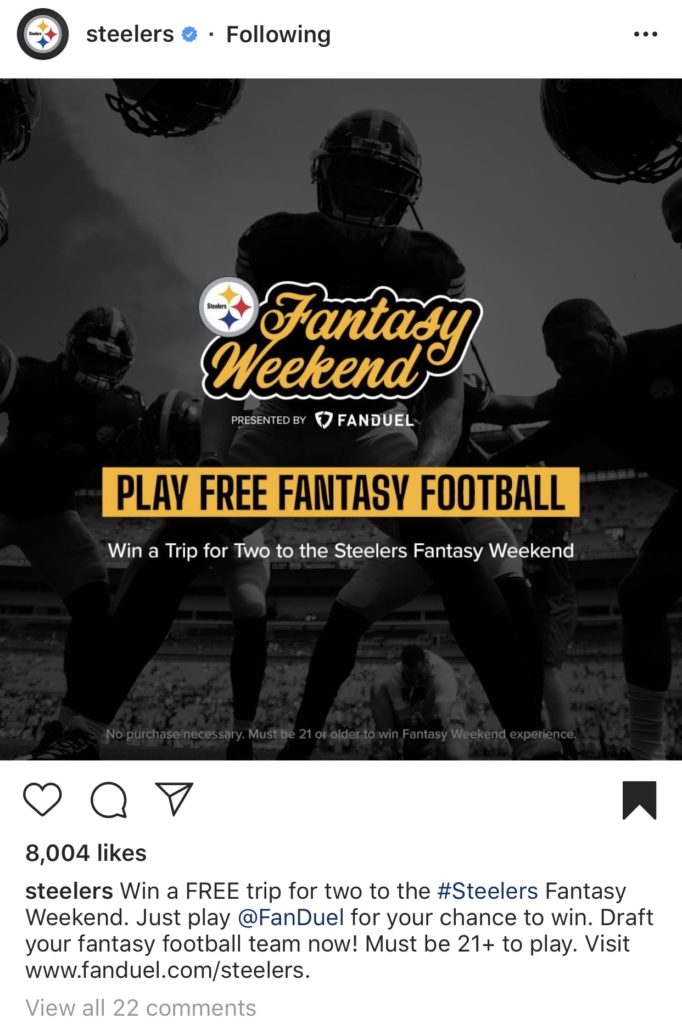
It is very important for teams to stay true to who they are and not let advertising get in the way of real visual storytelling content. Fans can spot what is genuine and what is fake from a mile away and when given hundreds of other visuals to look at and interact with on social media, they will have no problem passing it by. The more authentic pictures are, the better teams are able to connect with fans and then have them want to share it (Patterson). Take the above Steelers post for example. This post received the least amount of likes and comments in recent weeks as it offers no connection for fans but only draws attention to the advertisement in the foreground. The players are also unidentifiable as they are only silhouettes
While protecting the identity and brand of the teams intact, designers also have to keep in mind representing that which will draw the most attraction from fans when given more multiple things to post. Take a look here as both the Bears and Saints celebrate their respective wins. One could say the Bears pride themselves on teamwork while the Saints maybe choose to highlight their star player’s performance. “The idea is to make images that matter to the specific story, rather than seeking visuals afterward that ‘fit’” (Dahem). The content chosen here again depends on the fan bases known culture and desires for what they enjoy about their team.
Even league pages such as the NFL know what kind of audience they are catering to. Even though they cover all teams, they know the Patriots are all about business and hard work as seen in their record setting milestone while the Browns are more about having fun with each game that they win. What draws fans to their teams is that they represent what their cities stand for. And social media is a way to convey not only the franchise story but also to create unique ways to interact with fans (Clapp). Constant engagement and original content help to create excitement around the team and players which can then help to get the attention of other fans and more importantly the media.
By understanding how individual teams operate their own sports social media pages, it helps to also understand the difference in how sports new outlets run their own pages in terms of the content and visual stories they share to a much broader audience. Marketing a team takes a backseat to photojournalistic images as telling a story in the most engaging to want to learn more through other platforms of the company becomes the goal. Not to mention that the trust for these outlets is higher in terms of trusting them to tell the truth of the situation. Above are two pictures from the Thursday Night Football altercation between the Steelers and Browns. The picture on the left show Steelers QB Mason Rudolph victim to being hit by his own helmet while the one on the right shows him retaliating at Browns defensive end Myles Garrett. No one knows what was said between the two, but by looking at the different moments of when each picture was taken it is easy to influence viewers who started the altercation and who was the victim. Naturally ESPN chose picture garnering the most attention, the helmet hit, which reflects best what happened on the field, but it is interesting to look at how the narrative would have changed for people who hadn’t watched the game seeing only the pictures and reactions of fans and players.
Sports are about fandom and conversation, not just watching games (Shields). Not to mention everyone see the same game and footage from it, which is why content needs to stick out or use the advantage of people having prior knowledge to understand another story or engage with each other. And social media gives sports organizations the advantage over the traditional press (Cruyff). Which is why pages like the NFL look to have fans engage in comments over infographics rather than pictures. Things like playoff brackets and ranking lists are what people tune in for on channels like ESPN to hear the opinions and thought from others, and is why sports outlets, much like the individual teams, stick to their brand of storytelling and engagement with fans.
It truly is amazing that sports social media pages, such as ones for the NFL, are able to capture the attention and engagement of fans for almost 7 days a week with updates and other news regarding their team when in fact the actual game is only for 3 hours a week and 16 games at the minimum. That is the power of visual storytelling, in continuing the narrative on and off the field for fans to see and connect with their favorite players and teams and is why fandom is still unmatched in terms of loyalty.
Works Cited
Clapp, Brian. “Brian Clapp.” Sports Jobs Blog, WorkinSports.com Publisher Logo, 28 June 2017, www.workinsports.com/blog/unique-strategies-for-using-social-media-in-sports-marketing/.
Copperman, Amy. “Winning Sports Social Media Marketing: 21 Ways to Engage Fans Online: Adobe Spark.” Adobe Spark Blog, 12 Apr. 2018, blog.adobespark.com/2016/09/19/winning-sports-social-media-marketing-21-ways-to-engage-fans-online/.
Cruyff, Johan. “Social Networks Empower Clubs and Sports Organizations to the Detriment of the Traditional Press.” Cruyff Institute, Johan Cruyff Institute, 23 Feb. 2018, johancruyffinstitute.com/en/blog-en/sport-marketing/social-networks-empower-clubs-sports-organizations-detriment-traditional-press/.
Dahem, Nicole. “How to Do Better Visual Journalism for Solutions Stories.” MediaShift, 2 Dec. 2017, mediashift.org/2017/11/visually-reporting-solutions-stories-newsrooms-classrooms/.
DeMeré, Nichole Elizabeth. “The Power of Visual Storytelling: 15 Stunning Examples to Inspire You.” HubSpot Blog, 11 May 2016, blog.hubspot.com/marketing/visual-storytelling-examples.
Gitner, Seth. Multimedia Storytelling for Digital Communicators in a Multiplatform World. Routledge, 2016.
Heath, Helene. “What You Can Learn From the Best Sports Instagram Accounts.” Dash Hudson Blog, Dash Hudson Blog, 7 Jan. 2018, blog.dashhudson.com/best-sports-instagram-accounts-sports-team-social-media-strategy/.
Lupton, Ellen. Design Is Storytelling. Cooper Hewitt, Smithsonian Design Museum, 2017.
Moritz, Donna. “The Shift to Visual Social Media – 6 Tips for Business [Infographic].” Socially Sorted, 29 Nov. 2017, sociallysorted.com.au/shift-to-visual-social-media-6-tips-for-business-infographic/.
Parera, Elisabet. “10 Types of Visual Content for Your Strategies on Social Networks.” Postcron, 27 June 2019, postcron.com/en/blog/visual-content-strategies-for-social-networks/.
Patterson, Michael. “Social Media in Sports: 5 Strategies From the Pros.” Sprout Social, 19 Apr. 2018, sproutsocial.com/insights/social-media-in-sports/.
Raby, Alex. “5 Awesome Sports Social Media Examples to Learn From.” ThemeBoy, 2 July 2019, www.themeboy.com/blog/killer-sports-social-media-examples-2018/.
Read, Ash. “A Complete Guide to Instagram Marketing: Get the Playbook That Drives Results for Instagram’s Top Profiles -.” Buffer Marketing Library, Buffer Social Blog, 13 Dec. 2018, buffer.com/library/instagram-marketing.
Shields, Mike. “’Just Talk to a 24-Year Old,’ and You’ll Know Why ESPN Is Getting Buried in One Critical Area by Bleacher Report and Barstool Sports.” Business Insider, Business Insider, 16 Sept. 2017, www.businessinsider.com/espn-losing-social-media-audience-trump-facebook-instagram-jemele-hill-bleacher-report-barstool-2017-9.
Twiford, Kristin. “5 Innovative Visual Storytelling Tricks for College Social Media Teams to Try in 2017.” Libris Stories, 10 Apr. 2019, librisblog.photoshelter.com/5-innovative-visual-marketing-tips-for-university-social-media-teams-2017/?utm_source=blog&utm_medium=content&utm_campaign=college-sports-qa.
Twiford, Kristin. “7 College Sports Teams Share Their Social Media Secrets.” Libris Stories, 10 Apr. 2019, librisblog.photoshelter.com/7-college-sports-social-media-tips-best-practices-and-examples/.
Twiford, Kristin. “The Ultimate List of the Best Pro Sports Teams on Social Media.” Libris Stories, 10 Apr. 2019, librisblog.photoshelter.com/best-profesional-sports-teams-on-facebook-twitter-instagram/.
Zen, Pola. “Storytelling Secrets For Creating Images That Connect.” Yotpo, 22 July 2019, www.yotpo.com/blog/5-visual-storytelling-secrets-to-improve-your-marketing-images/.

